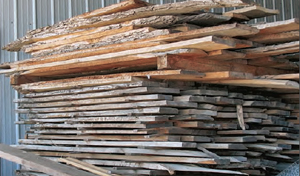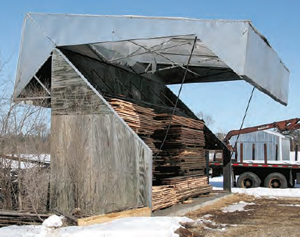
 Why is wood that has been kiln dried so much more stable than wood that has been air dried? Kiln dried wood is better to work with and makes for a better project; why is that? – Bob Brent
Why is wood that has been kiln dried so much more stable than wood that has been air dried? Kiln dried wood is better to work with and makes for a better project; why is that? – Bob Brent
Chris Marshall: Whether wood is kiln-dried or air-dried, the goal is to draw as much water out of the wood as possible, which stabilizes it into something useable for woodworking and stops the potential for fungal growth. Once wood is dried to 8 to 10 percent moisture content in a given shop environment, it is “stable” for woodworking. Doesn’t matter whether that drying process happened in a giant oven or stickered and covered in someone’s barn for a few years. So, kiln-dried lumber isn’t qualitatively “better” than air-dried lumber; it’s simply a quicker method of drying the green wood. That said, both air drying or kiln drying can lead to distortion and checking in the lumber if the drying process isn’t done correctly. The important thing is to find a supplier who is competent in drying lumber by whichever means they use. Once you have properly kiln- or air-dried wood, it’s equally “good” for general woodworking. And, if you plan to steam-bend parts of your projects, you’ll definitely want to use air-dried wood: it remains more pliable than kiln-dried stock.
Tim Inman: I think it might be more accurate to refer to kiln-dried lumber as more uniform than air-dried lumber. If the wood is uniformly dried through and through, then it will be equally stable. Often, air-dried lumber is “wetter” in the middle than on the outside borders, even after “years” of lying in a barn or attic loft. Kiln-dried lumber is much more uniformly at balance with the moisture in the air all the way through the wood. So, it isn’t so much a matter of stability as it is a matter of controlled environment and consistency. Some woodworkers feel air-dried lumber is nicer to work, and that kiln dried lumber is a bit more brittle. It is a matter of personal choice. It is also a big disappointment to build a fine project from air-dried lumber which is not really dry — and to discover the fact afterwards when the wood begins to shrink and the joints open and the top splits. An electronic moisture meter will tell the answer in a jiffy.





